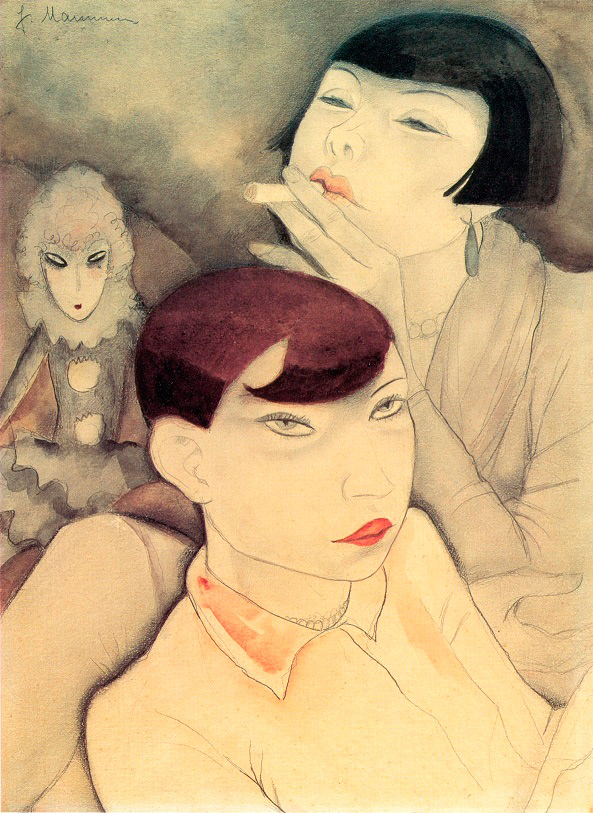New Roles, New Models
Gallery 206
The new understanding of the roles of men and women is closely bound up with World War I and its consequences. With men away fighting at the front, women acquired new social freedoms in both their work and private lives, and with them a measure of autonomy. The gradual introduction of women’s suffrage in many parts of Europe from 1918 onwards was the most symbolic manifestation of this. This transformation can clearly be traced in the fashion of the time. Among men, beards gave way to wet shaving and pomaded hair; the bowler replaced the top hat, while the casually cut suit and elegant tie superseded the stiff frock coat. For women, bob cuts were all the rage, along with kneelength, unwaisted dresses and occasional smoking in elegant poses. Throughout Europe, novels and research literature challenged conventional sexual mores and broke down the taboos surrounding supposed ‘perversions.’ In Paris, 1922 saw the publication of Victor Margueritte’s bestseller La garçonne, with illustrations by Kees van Dongen in 1925, while that same year Alexandra Kollontai’s Wege der Liebe appeared in Berlin. For Kollontai, passion and love define only certain phases in the life of the working ‘modern woman,’ and it was entirely posible for a woman to become a mother without being married. New professions—such as that of secretaries— came into being, while conventional job descriptions came under scrutiny.

